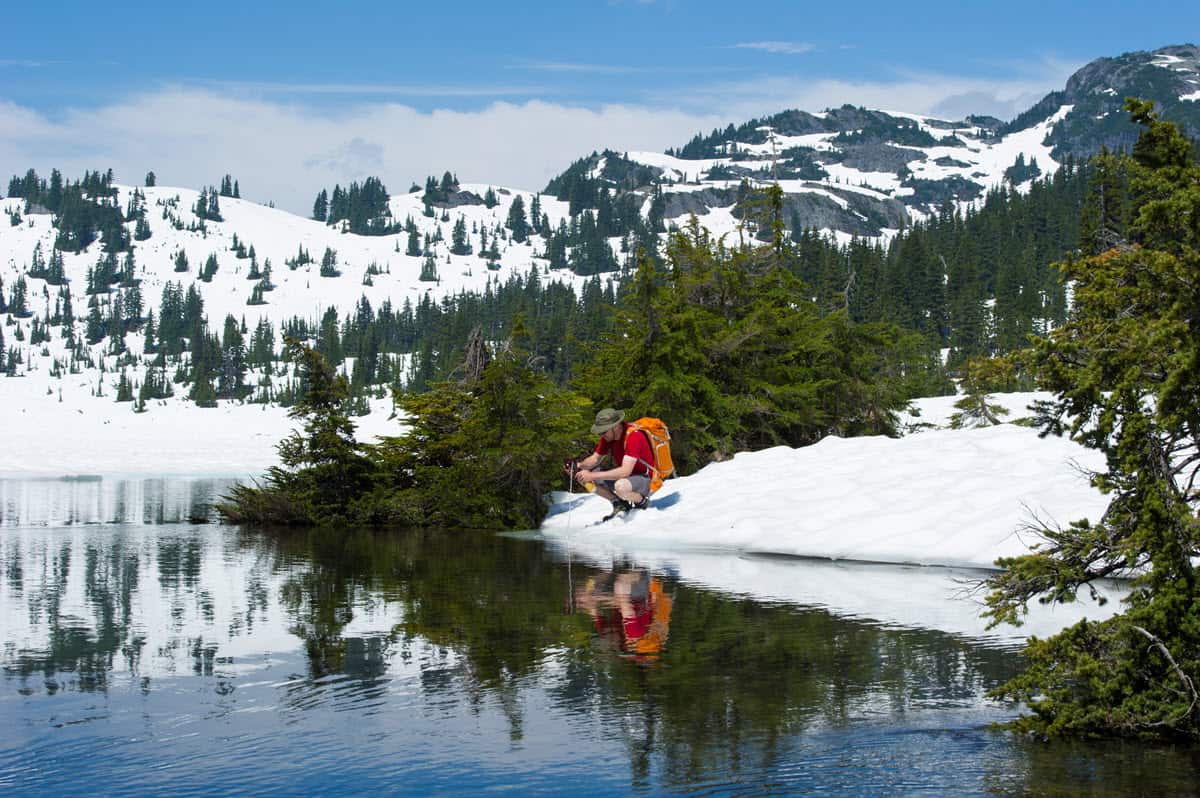
Learning how to purify water in the wild is a crucial survival skill. It can also mean the difference between enjoying your adventure and facing serious health risks.
In this blog post, you’ll discover various methods for finding, filtering, and purifying water in wilderness situations.
Key Takeaways
- Purifying water in the wild is crucial for hydration and to avoid illnesses caused by harmful microorganisms.
- Natural sources like rivers, lakes, and rainwater can be drinking water sources. Still, they must be filtered or purified before consumption.
- Sedimentation, natural materials filtration, boiling, chemical treatments (tablets/drops), UV lamps, and solar stills are effective methods of purifying water in the wild.
- It’s essential to research which method(s) will work best based on your location and terrain conditions. Remember that safety always comes first when dealing with backcountry hydration needs!
Table of Contents
- The Importance Of Purifying Water In The Wild
- Finding A Water Source
- Water Filtration Vs. Purification
- How To Filter Water In The Wild
- Methods For Purifying Water In The Wild
- Making A DIY Water Filter In The Wild
- Tips For Safe Water Consumption
- Choosing The Best Method For Your Situation
- Essential Gear For Water Purification In The Wild
- Additional Survival Skills For Staying Hydrated
- Final Thoughts on Purifying Water
- FAQs
- Why is it important to purify water in the wilderness?
- What are the ways to purify water in the wilderness?
- Can I use a regular water bottle to purify water?
- What are water purification tablets, and how do they work?
- What is the difference between filtering and purifying water?
- How can I determine if the water quality is safe to drink?
- What is the easiest way to purify water in the wilderness?
- What should I do if I don’t have a pot to boil water?
- How much water should I purify at a time?
- Are there any organisms in the water that are not eliminated by boiling?
The Importance Of Purifying Water In The Wild
Purifying water in the wild is crucial to maintain hydration and prevent waterborne illnesses caused by contaminants like bacteria, viruses, and parasites.
Hydration And Health
Staying adequately hydrated is essential for maintaining good health during outdoor adventures like camping, backpacking, and hiking. A lack of hydration can lead to issues such as fatigue, headaches, muscle cramps, or even life-threatening conditions such as heat exhaustion and heat stroke.
For campers, backpackers, hikers, and survivalists who often venture into wilderness areas far from clean water sources or facilities that provide safe drinking water supplies, it’s vital to understand the importance of purifying found water before consumption.
A reliable purification method ensures adequate hydration and helps maintain overall health by preventing illnesses caused by contaminants.
Waterborne Contaminants And Diseases
Waterborne contaminants and diseases pose a severe risk for campers, backpackers, hikers, and survivalists who venture into the wild. As you navigate wilderness areas in search of adventure or tranquility, it’s crucial to be aware of the dangers lurking in even the most pristine-looking water sources.
For example, imagine setting up camp next to a sparkling stream flowing from snow-capped mountains – it may seem like an ample source of clean drinking water. However, animals could contaminate the water with feces or decaying plant matter upstream, introducing harmful organisms into your perceived oasis.
It’s essential for international travelers visiting countries with inadequate sanitation facilities and seasoned adventurers exploring remote locations closer to home.
Even if some individuals claim they’ve successfully consumed untreated water from high altitudes without suffering any ill effects, remember that everyone’s immune system is different, and what might work for one person could be disastrous for another.
Here’s a list of common waterborne pathogens that can be found in untreated water in the wild, as well as the health issues they may cause:
- Bacteria such as E. coli, Salmonella, and Campylobacter. These can cause gastrointestinal illnesses, including diarrhea, vomiting, and stomach cramps.
- Viruses such as Norovirus, Hepatitis A, and Enteroviruses. These can also cause gastrointestinal illnesses and more serious conditions like hepatitis.
- Protozoa, including Giardia and Cryptosporidium. These can cause giardiasis and cryptosporidiosis, which are types of diarrheal diseases.
- Parasites such as Schistosoma can cause schistosomiasis, a disease that can damage internal organs.
- Algae: Certain types of algae can produce toxins that are harmful if ingested.
- Chemical contaminants can include heavy metals like lead and mercury, pesticides, and other industrial pollutants. These can have various health effects, depending on the specific contaminant and the level of exposure.
It’s important to note that the presence and concentration of these contaminants can vary widely depending on the specific location and conditions. Therefore, it’s always a good idea to treat water from natural sources before drinking it, using methods such as boiling, filtration, or chemical disinfection
Finding A Water Source
Knowing how to find a water source is crucial to staying hydrated in the wild. Natural sources like rivers and lakes are ideal, but rainwater collection and solar stills can also work in a pinch.
Natural Sources (rivers, Lakes, Streams)
Exploring the great outdoors requires campers, backpackers, hikers, and survivalists to find and utilize natural water sources for hydration. These natural sources play a vital role in providing drinkable water while spending time in the wild:
- Rivers provide flowing freshwater and are typically abundant with aquatic life.
- Streams offer smaller quantities of fresh moving water, making them easier to access but potentially less reliable as a long-term source.
- Lakes can hold vast amounts of still freshwater; however, they may require additional purification methods due to possible contaminants.
- Glaciers can serve as an impressive source of cold freshwater preserved over time in ice form.
- Wetlands, including swamps and marshes, can sometimes offer small pockets of fresh water amidst their unique ecosystems but must be approached cautiously due to increased contamination risks.
Remember that even these natural sources could be contaminated with harmful bacteria or viruses, so purifying any collected water before drinking is crucial.
Rainwater Collection
Suppose you’re out in the wild and need a source of safe drinking water to sustain yourself. In that case, collecting rainwater can be an excellent option. Rainwater is generally clean and devoid of harmful contaminants commonly found in natural water sources like rivers or streams.
Building a rainwater collection system can vary on factors such as climate or individual needs. Still, it involves three essential components: the supply (rainfall), the demand (water requirement), and the system that moves the water.
Solar Stills
One effective method to purify water in the wild is by using solar stills. Solar stills work by using the heat of the sun to evaporate water and separate it from substances dissolved in it, such as salt or other contaminants.
The process involves:
- Digging a hole in damp soil.
- Placing a container in the center of the hole.
- Covering it with clear plastic wrap.
- Weighing down the edges with rocks or dirt.
Solar stills are ideal for survival situations with limited access to clean drinking water. They can also be used alongside other methods, like filtration or chemical treatments, for added purification benefits.
Water Filtration Vs. Purification
Understanding the difference between water filtration and purification in the wild is essential. While filtration removes larger sediments and particles from water, purification methods such as boiling or chemical treatments are necessary to kill harmful bacteria and parasites.
Differences And Applications
Water filtration and water purification are two different techniques used to make water safe for consumption. Filtration involves physically removing contaminants found in the water. At the same time, purification is a process of eliminating harmful viruses and pathogens from water.
Filtration is an excellent option if you’re confident your wilderness water source doesn’t contain viruses or other toxins. It’s simple to use a straw-style filter or pump filter system that can quickly strain freshwater through activated carbon and ceramic tubes to remove unwanted organisms.
It’s essential to research which method(s) will work best based on your location and know how reliable daily access you’ll have to natural sources of freshwater where you’ll be adventuring.
- DRINKING WATER, ANYTIME, ANYWHERE – Aquatabs are the world’s most popular tablet and the ultimate choice for portable water treatment tablets. Removes 99.9999% of Bacteria, 99.99% of Viruses, and 99.9% of Cysts (Giardia).
- FEEL SAFE OUT THERE – Aquatabs are an excellent solution for purifying water while camping, RVing, or in emergency survival situations. Simply add one 397mg Aquatabs tablet to 4 gallons of water and wait 30 minutes.
- BE BETTER PREPARED – These drinking water purification tablets are lightweight, making them easy to store in a disaster kit or bugout bag. They can also be used to clean and maintain your RV.
- ENJOY GREAT TASTING WATER EVERY TIME – Aquatabs-treated water has no unpleasant taste, color, or odor unlike iodine-based products. Pair Aquatabs water purifying tablets with a water filtration system to treat water from sediment heavy sources.
- TREAT WATER FOR THE WHOLE FAMILY – Groups who drink untreated backcountry water are at a higher risk of ingesting parasites and bacteria. When hiking with a crew, it’s best to come prepared. Trust Aquatabs for all of your safe water needs! Expiration Date: April 2026
- One Bottle Of 50 Potable Aqua Water Purification Tablets And One Bottle Of 50 Potable Aqua Pa Plus Tables
- Water Purification Tablets Make Questionable Water Bacteriologically Suitable To Drink In Emergency Water Situations
- These Water Purification Tablets For Drinking Water Leaves No Iodine Taste Or Color In Your Emergency Water, When Used Correctly.
- Portable Water Treatment Tablets Are Effective Against Bacteria And Giardia Lamblia, For Trusted Emergency Water Purification
- Water Treatment Tablets Offer Emergency Water Purification For Hiking, Travel, And Natural Disasters, And Ideal To Keep With Camping Accessories
- Removes Bacteria & Parasites: The Microfiltration Membrane Removes 99.999999% Of Waterborne Bacteria (Including E. Coli And Salmonella), And 99.999% Of Waterborne Parasites (Including Giardia And Cryptosporidium)
- Removes Microplastics: Removes The Smallest Microplastics Found In The Environment (Down To 1 Micron), And Reduces Turbidity Down To 0.2 Microns
- Rigorous Testing: All Claims Are Verified With Laboratories Using Standard Testing Protocols Set By The Us Epa, Nsf, Astm For Water Purifiers
- Long Lifetime: The Microbiological Filter Will Provide 4,000 Liters (1,000 Gallons) Of Clean And Safe Drinking Water With Proper Use And Maintenance
- Make An Impact: For Every Lifestraw Product Purchased, A School Child In Need Receives Safe Drinking Water For An Entire School Year.Bpa Free Materials
- Survival Gear for Outdoor Water Needs – SGS certificated, Test Report NBF21-004693-01. If you want to obtain clean drinking water simply and quickly, you can use this survival gear. The portable and lightweight filtering system is ideal for recreation, hiking, camping. It’s also your good companion for scouting, domestic and international travel, and emergency preparedness.
- Portable & Long Life-Span – This straw filtration at only 7.1” long and 1″ in diameter fits any 28mm threaded bottle, cup, or glass. It weighs just 2 ounces and fits in the palm of your hand, pocket, gym bag, backpack, survival pack or purse. Both ends of the Upgrade water filter straw are removable for cleaning to extend Longer Lifespan ensuring it provides up to 1,320 gallons (5,000 liters) of drinking water. Don’t miss this opportunity to drink clean water conveniently wherever you go.
- 5-Stage Filtration – Our Upgrade 5-Stage Filtration System includes a coarse filter screen, double layer pp cotton fiber, coconut shell activated carbon and hollow fiber ultrafiltration membranes. which can remove 99.99999% of harmful substances (pollution, odor, chlorine and organic chemicals, etc.) and improve the taste. Ensuring the safest water in the worst environments.(IT DOES NOT LOWER TDS VALUE, ensuring water’s essential mineral balance remains untouched.)
- Smaller Pore Size – We all know that the smaller the pore size, the higher the filtering accuracy, our pore size is 0.1microns which can filter out 99.99999% of the harmful particles. Compared to the 0.2-micron water purifier straw on the market, Membrane Solutions 0.1 microns pore size water purifier straw maintains the optimum flow rate (16.9 fl oz/min / 500ml/min) and a high filtration accuracy at the same time.
- High-Quality Materials & Versatile Filtering Modes – Made of durable food-grade plastics, manufactured with BPA-Free ABS, ensuring safe and quality drinking water. Compared to the big filter straw on the market, Membrane Solutions water filters have a smaller frame, more convenient to use and more filtered modes, ideal for connecting with a soft water pouch or disposable water bottle, even as a replacement gravity filter to get pure water for family & group.
How To Filter Water In The Wild
Filtering water in the wild can be done using natural materials such as sand and charcoal or through sedimentation. Still, various methods are available depending on your situation – read on to discover which suits you best.
Sedimentation
One of the critical steps in purifying water in the wild is sedimentation. This involves allowing large particles or debris to settle at the bottom of a container before carefully pouring off the clearer water from above.
Sedimentation is significant as it helps remove visible impurities such as dirt and sand, which can interfere with subsequent filtration or purification methods.
It’s worth noting that sedimentation alone will not make water safe to drink. Still, it’s an essential first step toward ensuring your drinking water is clean and free from harmful contaminants.
Natural Materials (sand, Charcoal, Cloth)
One way to filter water in the wild is by using natural materials. Here are some options:
- Sand: Pouring water through layers of fine sand can help remove physical impurities such as dirt and debris.
- Charcoal: Crushed charcoal can be used to filter out chemicals and odors from water.
- Cloth: A piece of cloth, like a bandana or t-shirt, can be used as a makeshift filter for sediment and larger debris.
- Pebbles: Larger pebbles can create layers in a natural filtration system, with smaller materials like sand and charcoal filling in between.
- Grasses or leaves: These can also be layered in a natural filtration system to help remove impurities.
It’s important to note that using natural materials alone will not completely purify water. Combining these methods with other purification techniques like boiling or chemical treatments for safe drinking water in the wilderness is best.
You may interested to know: Can You Use Bear Spray on Humans.
Methods For Purifying Water In The Wild
Boiling, chemical treatments like tablets and drops, ultraviolet light devices, solar disinfection, and distillation are all effective methods for purifying water in the wild.
Boiling
Boiling water is one of the easiest and most effective ways to purify water in the wild. By boiling clear water for at least 1 minute (3 minutes if you’re above 6,500 feet), you can kill all bacteria and viruses that may be present in the source.
It’s important to remember that boiling doesn’t remove sediment or other impurities from dirty or murky water. In this case, it’s best to let the sediment settle before pouring the clear water into a pot for boiling.
Boiling is also excellent for treating snow or ice and relatively clean rainwater collected from a tarp or other catchment surface.
Chemical Treatments (tablets, Drops)
Chemical treatments are a popular and effective way to purify water in the wild. Here are some commonly used chemical treatments for water purification:
- Chlorine bleach: Add eight drops of unscented chlorine bleach per gallon of water, stir, and let stand for 30 minutes before drinking.
- Iodine: Use iodine tablets or liquid drops according to the manufacturer’s instructions. Let it sit for at least 30 minutes before consuming it.
- Chlorine dioxide: Available in tablet or liquid form, chlorine dioxide is effective against bacteria and viruses. Follow the manufacturer’s instructions for dosage and wait time.
It is important to note that while chemical treatments can effectively kill harmful bacteria and viruses in the water, they may not remove contaminants like dirt or sediment. It is recommended to use a combination of filtration and chemical treatment for best results. Additionally, some people may be sensitive to the taste or smell of treated water, so it’s a good idea to test any chemical treatment beforehand and bring flavor enhancers like lemon juice or powdered drink mixes for added taste.
Ultraviolet Light Devices
Ultraviolet light devices are a game-changer for water purification in the wild. These compact and portable units use ultraviolet (UV) light to kill bacteria, viruses, and other harmful organisms that may be present in natural water sources.
They work by exposing microorganisms to a specific wavelength of UV light that damages their DNA, rendering them unable to reproduce and causing them to die off. UV devices can effectively purify large volumes of water quickly without relying on chemicals or filters that can eventually run out or become clogged.
Solar Disinfection
Solar disinfection, also known as SODIS, is a simple and effective way to purify water in the wild using solar energy. It involves filling clear plastic bottles with water and exposing them to direct sunlight for several hours.
The UV rays penetrate the water and kill harmful bacteria, viruses, and parasites that cause waterborne diseases.
Studies have shown that SODIS can be just as effective as other purification methods, such as boiling or chemical treatments. This makes it an ideal way for those who don’t have access to fire or chemicals while out in the wilderness.
Additionally, this method is cost-effective since it only requires clear plastic bottles, which are widely available.
Distillation
Distillation is a method of purifying water in the wild by heating it until it turns into steam and then condensing it back into water. This process effectively removes impurities, including salt and other minerals, making the water safe for consumption.
To distill water in the wild, use a simple device like a solar still or build your own with natural materials like bamboo or plastic sheeting.
Making A DIY Water Filter In The Wild
To make a DIY water filter in the wild, gather natural materials like sand and charcoal, layer them in a container or bottle with small holes at the bottom, and pour contaminated water through it to remove sediment and impurities.
Materials And Construction
Creating a water filter in the wilderness requires resourcefulness and ingenuity. Fortunately, many of the materials needed for constructing a makeshift water filtration system can be found in nature.
Pebbles, sand, cloth, and activated charcoal are just a few examples of materials that can be used to make an effective filter. To construct a basic filter using these materials, start digging a hole in the ground and placing a container with small holes at the bottom.
Next, layer pebbles and coarse sand on top of each other up until halfway through the container. Add fine sand on top of that layer before adding another layer of pebbles or rocks until it reaches the brim.
Tips For Safe Water Consumption
Store purified water in a clean container, separate from any untreated water, to avoid cross-contamination.
Storing Purified Water
After purifying your water in the wild, it’s essential to store it properly to ensure its safety and quality. Clean containers with tight-fitting covers are ideal for storing purified water during an emergency, camping trip, or outdoor adventure.
Ensure that the containers you choose are free of cracks, chips, or other damage that could compromise their ability to keep contamination out. Additionally, be sure to label each container clearly with the date of purification and avoid cross-contamination by handling them only when necessary using clean hands or gloves.
Avoiding Cross-contamination
To ensure the safety of your purified water, it’s crucial to avoid cross-contamination. This means that you should always keep untreated water from coming into contact with treated water or the tools used for purification.
It would be best to always wash your hands and utensils thoroughly before handling purified water to prevent contamination.
In survival situations where resources are limited, it may only sometimes be possible to have separate containers for each type of water. Consider using color-coded containers or labeling them clearly to distinguish between treated and untreated sources.
By taking precautions against cross-contamination, you can ensure that all your hard work purifying and filtering your drinking water is not undone by accidental exposure to harmful contaminants.
Choosing The Best Method For Your Situation
Consider factors such as time, resources, and location when selecting the best water purification method for your situation; read on to learn more about essential gear and additional survival skills for staying hydrated in the wilderness.
Factors To Consider (time, Resources, Location)
When purifying water in the wilderness, there are several factors to keep in mind that will affect your choice of method and its effectiveness. Here are some important considerations for campers, backpackers, hikers, and survivalists:
- Location: Different sources of water may require different purification methods. For example, clear running water may require less filtration than stagnant or polluted sources.
- Time: Choosing a method that fits your schedule is crucial. Boiling water takes longer than using a chemical tablet or UV light device.
- Resources: Depending on the situation, you may have limited resources available to purify water. This can include limited fuel for boiling or a need for more materials to construct a DIY filter.
- Water volume: Consider how much water you need to purify and if your chosen method can handle that amount efficiently.
- Temperature: Some methods, such as chemical treatment, may be less effective in cold water temperatures.
- Filtering needs: Determine if filtration is necessary based on impurities present in the water source, such as sediment or debris.
By considering these factors and selecting the appropriate method for your situation, you can ensure safe and clean drinking water while adventuring in the great outdoors.
Essential Gear For Water Purification In The Wild
Some essential gear for water purification in the wild includes personal water filters and pumps, portable UV devices, and water purification tablets and drops – make sure you have the right tools to get clean drinking water on your next outdoor adventure.
Personal Water Filters And Pumps
Personal water filters and pumps are essential gear for anyone who spends time in the wild. These devices can help ensure access to clean drinking water, even in remote or challenging environments. Here are some key facts and considerations to keep in mind when choosing a personal water filter or pump:
- Personal filters come in different styles, including pump-action filters and gravity-fed drip/suction filters.
- Pump-action filters use a hand pump to force water through a filter cartridge. In contrast, drip/suction filters rely on gravity to pull water through the filter.
- Some personal filters can remove many contaminants from water, including bacteria, protozoa, and sediment. However, they may not be effective against viruses or extra-tiny microbes that are too small to catch in a typical filter.
- UV water purifiers use ultraviolet light to kill viruses and other pathogens in water. These devices require batteries but can be effective against various contaminants.
- When selecting a personal filter or pump, consider factors like weight, size, ease of use, filtration capacity (i.e., how many liters of water the device can treat), and replacement cartridges/batteries as needed.
- Following the manufacturer’s guidelines for using and maintaining any personal filter or pump is important. Regular cleaning and storage can ensure that these devices function effectively over time.
Campers, backpackers, hikers, and survivalists can stay hydrated and healthy during their outdoor adventures by investing in a quality personal water filter or pump. Keep these tips in mind when choosing your next filtration device!
Portable UV Devices
Portable UV devices are a popular and effective method for purifying water in the wild. These compact and lightweight devices use ultraviolet light to kill bacteria, viruses, and other harmful microorganisms in untreated water sources.
They can be easily transported in your backpack or gear bag, making them ideal for camping, hiking, and survival situations. One of the major advantages of using portable UV purifiers is that they do not require any chemicals or filters to work effectively.
Water Purification Tablets And Drops
Water purification tablets and drops are essential gear to have in the wild. They are easy to carry, lightweight, and highly effective in killing microorganisms that may be present in unfiltered water. Here are some important things to know:
- Portable water purification chemicals come in tablet, liquid, or powder form.
- The most common disinfectants used in these products are iodine or chlorine.
- To use tablets or drops, follow the manufacturer’s instructions for dosage and wait time before drinking.
- Typically, it takes about 30 minutes for the chemicals to take effect and purify the water.
- Water purification tablets and drops can be found in many camping and outdoor stores and online retailers.
- It is important to note that while water purification tablets and drops can effectively kill bacteria and viruses, they may not remove sediment or other particles from the water. In such cases, a filter may still be necessary.
Overall, when going into the wilderness, it’s always best to bring along tools to ensure your safety – especially when it comes to something as essential as clean drinking water. And with portable water purification chemicals like tablets and drops around, access to safe water is always within reach.
Additional Survival Skills For Staying Hydrated
Recognizing the signs of dehydration, such as thirst, dry mouth, and dark urine, can help you proactively avoid it while hiking or camping; read on to learn more essential survival skills for staying hydrated in the wild.
Recognizing Signs Of Dehydration
Dehydration is a common problem for campers, backpackers, hikers, and survivalists in the wild. Knowing the signs of dehydration can help you take action early enough to prevent more serious problems. Here are some common signs to watch out for:
- Thirst: A dry mouth or feeling thirsty is often the first sign of dehydration.
- Dark Urine: When your urine is dark yellow or amber-colored, it’s usually a sign that you’re not drinking enough water.
- Fatigue: Feeling tired or sluggish when performing tasks can be a sign of dehydration.
- Headache: Dehydration can cause headaches, especially if you’re exposed to the sun for long periods.
- Dizziness: Feeling dizzy or lightheaded can be caused by dehydration and other factors.
- Rapid heartbeat: When your body is dehydrated, your heart has to work harder and faster to pump blood.
- Confusion: Severe dehydration can cause confusion and disorientation.
Remember to drink water regularly throughout the day, even if you don’t feel thirsty, and avoid alcohol and caffeine, which can increase dehydration. If you notice any symptoms of dehydration, stop what you’re doing and rest in a cool shaded area while drinking clean water or an oral rehydration solution (ORS) if available.
Conserving Water In Extreme Conditions
When facing extreme conditions, like being stranded in the wilderness with a limited water supply, conserving water becomes crucial. One way to conserve water is by reducing physical activity and regulating body temperature.
Avoid sweating unnecessarily by resting during the hottest parts of the day and staying in the shade.
Another effective method for conserving water is to stick to a strict rationing schedule. Determine your available water and divide it into smaller portions that will last throughout the day without overconsumption.
Remember that every drop matters in survival situations, so always keep an eye out for potential sources of clean water, like morning dew on plants or collecting rainwater during thunderstorms using improvised containers such as tarps or ponchos.
Final Thoughts on Purifying Water
Finding clean water is essential to staying hydrated and healthy in a survival situation. But with the proper knowledge and gear, purifying water in the wild can be done safely and effectively.
Whether using natural materials like sand and charcoal for filtration or boiling water over an open flame, various methods are available for making contaminated water safe to drink.
Consider your location, resources, and time when choosing a purification method. And remember to pack essential gear like personal filters or UV lamps in emergencies.
Remember, drinking contaminated water can lead to severe health consequences, such as diarrhea, dysentery, amoeba infections, and hepatitis A, just to name a few. If you’re not sure about the cleanliness of the water… purify it just to be safe.
FAQs
Why is it important to purify water in the wilderness?
Water in the wilderness may contain harmful bacteria or viruses that can make you sick. Purifying the water is necessary to make it safe to drink.
What are the ways to purify water in the wilderness?
Some ways to purify water in the wilderness include boiling, water purification tablets, filtering, and distillation.
Can I use a regular water bottle to purify water?
You can use a regular water bottle to purify water as part of several water filtration and purification methods, including Solar Disinfection and DIY water filters.
What are water purification tablets, and how do they work?
Water purification tablets are small tablets added to water to disinfect it. The tablets release chemicals that kill bacteria and viruses in the water. After adding the tablets, you should wait a specific amount before drinking the water.
What is the difference between filtering and purifying water?
Filtering removes impurities and sediment from the water but does not eliminate bacteria or viruses. Purifying water, on the other hand, gets rid of harmful organisms and makes the water potable.
How can I determine if the water quality is safe to drink?
You can use a water testing kit to determine the quality of the water. Alternatively, you can consult with local health officials who can provide information on the safety of the water in the area.
What is the easiest way to purify water in the wilderness?
Boiling is the easiest way to purify water in the wilderness. Bring a pot of water to a rolling boil for at least one minute to kill harmful bacteria and viruses.
What should I do if I don’t have a pot to boil water?
If you don’t have a pot, you can still purify water using other methods, such as filtering or water purification tablets.
How much water should I purify at a time?
Purifying water one quart at a time is recommended to ensure it is adequately treated.
Are there any organisms in the water that are not eliminated by boiling?
Boiling water will eliminate most bacteria and viruses, but it may not get rid of certain parasites or chemicals that can be harmful. It is essential to consider all water treatment methods and choose the one appropriate for the type of water you have available.
- DRINKING WATER, ANYTIME, ANYWHERE – Aquatabs are the world’s most popular tablet and the ultimate choice for portable water treatment tablets. Removes 99.9999% of Bacteria, 99.99% of Viruses, and 99.9% of Cysts (Giardia).
- FEEL SAFE OUT THERE – Aquatabs are an excellent solution for purifying water while camping, RVing, or in emergency survival situations. Simply add one 397mg Aquatabs tablet to 4 gallons of water and wait 30 minutes.
- BE BETTER PREPARED – These drinking water purification tablets are lightweight, making them easy to store in a disaster kit or bugout bag. They can also be used to clean and maintain your RV.
- ENJOY GREAT TASTING WATER EVERY TIME – Aquatabs-treated water has no unpleasant taste, color, or odor unlike iodine-based products. Pair Aquatabs water purifying tablets with a water filtration system to treat water from sediment heavy sources.
- TREAT WATER FOR THE WHOLE FAMILY – Groups who drink untreated backcountry water are at a higher risk of ingesting parasites and bacteria. When hiking with a crew, it’s best to come prepared. Trust Aquatabs for all of your safe water needs! Expiration Date: April 2026
- One Bottle Of 50 Potable Aqua Water Purification Tablets And One Bottle Of 50 Potable Aqua Pa Plus Tables
- Water Purification Tablets Make Questionable Water Bacteriologically Suitable To Drink In Emergency Water Situations
- These Water Purification Tablets For Drinking Water Leaves No Iodine Taste Or Color In Your Emergency Water, When Used Correctly.
- Portable Water Treatment Tablets Are Effective Against Bacteria And Giardia Lamblia, For Trusted Emergency Water Purification
- Water Treatment Tablets Offer Emergency Water Purification For Hiking, Travel, And Natural Disasters, And Ideal To Keep With Camping Accessories
- Removes Bacteria & Parasites: The Microfiltration Membrane Removes 99.999999% Of Waterborne Bacteria (Including E. Coli And Salmonella), And 99.999% Of Waterborne Parasites (Including Giardia And Cryptosporidium)
- Removes Microplastics: Removes The Smallest Microplastics Found In The Environment (Down To 1 Micron), And Reduces Turbidity Down To 0.2 Microns
- Rigorous Testing: All Claims Are Verified With Laboratories Using Standard Testing Protocols Set By The Us Epa, Nsf, Astm For Water Purifiers
- Long Lifetime: The Microbiological Filter Will Provide 4,000 Liters (1,000 Gallons) Of Clean And Safe Drinking Water With Proper Use And Maintenance
- Make An Impact: For Every Lifestraw Product Purchased, A School Child In Need Receives Safe Drinking Water For An Entire School Year.Bpa Free Materials
- Survival Gear for Outdoor Water Needs – SGS certificated, Test Report NBF21-004693-01. If you want to obtain clean drinking water simply and quickly, you can use this survival gear. The portable and lightweight filtering system is ideal for recreation, hiking, camping. It’s also your good companion for scouting, domestic and international travel, and emergency preparedness.
- Portable & Long Life-Span – This straw filtration at only 7.1” long and 1″ in diameter fits any 28mm threaded bottle, cup, or glass. It weighs just 2 ounces and fits in the palm of your hand, pocket, gym bag, backpack, survival pack or purse. Both ends of the Upgrade water filter straw are removable for cleaning to extend Longer Lifespan ensuring it provides up to 1,320 gallons (5,000 liters) of drinking water. Don’t miss this opportunity to drink clean water conveniently wherever you go.
- 5-Stage Filtration – Our Upgrade 5-Stage Filtration System includes a coarse filter screen, double layer pp cotton fiber, coconut shell activated carbon and hollow fiber ultrafiltration membranes. which can remove 99.99999% of harmful substances (pollution, odor, chlorine and organic chemicals, etc.) and improve the taste. Ensuring the safest water in the worst environments.(IT DOES NOT LOWER TDS VALUE, ensuring water’s essential mineral balance remains untouched.)
- Smaller Pore Size – We all know that the smaller the pore size, the higher the filtering accuracy, our pore size is 0.1microns which can filter out 99.99999% of the harmful particles. Compared to the 0.2-micron water purifier straw on the market, Membrane Solutions 0.1 microns pore size water purifier straw maintains the optimum flow rate (16.9 fl oz/min / 500ml/min) and a high filtration accuracy at the same time.
- High-Quality Materials & Versatile Filtering Modes – Made of durable food-grade plastics, manufactured with BPA-Free ABS, ensuring safe and quality drinking water. Compared to the big filter straw on the market, Membrane Solutions water filters have a smaller frame, more convenient to use and more filtered modes, ideal for connecting with a soft water pouch or disposable water bottle, even as a replacement gravity filter to get pure water for family & group.




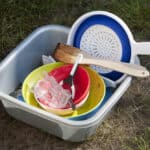
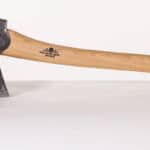
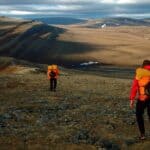
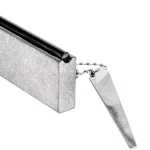




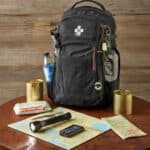
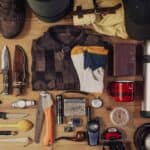
Leave a Reply